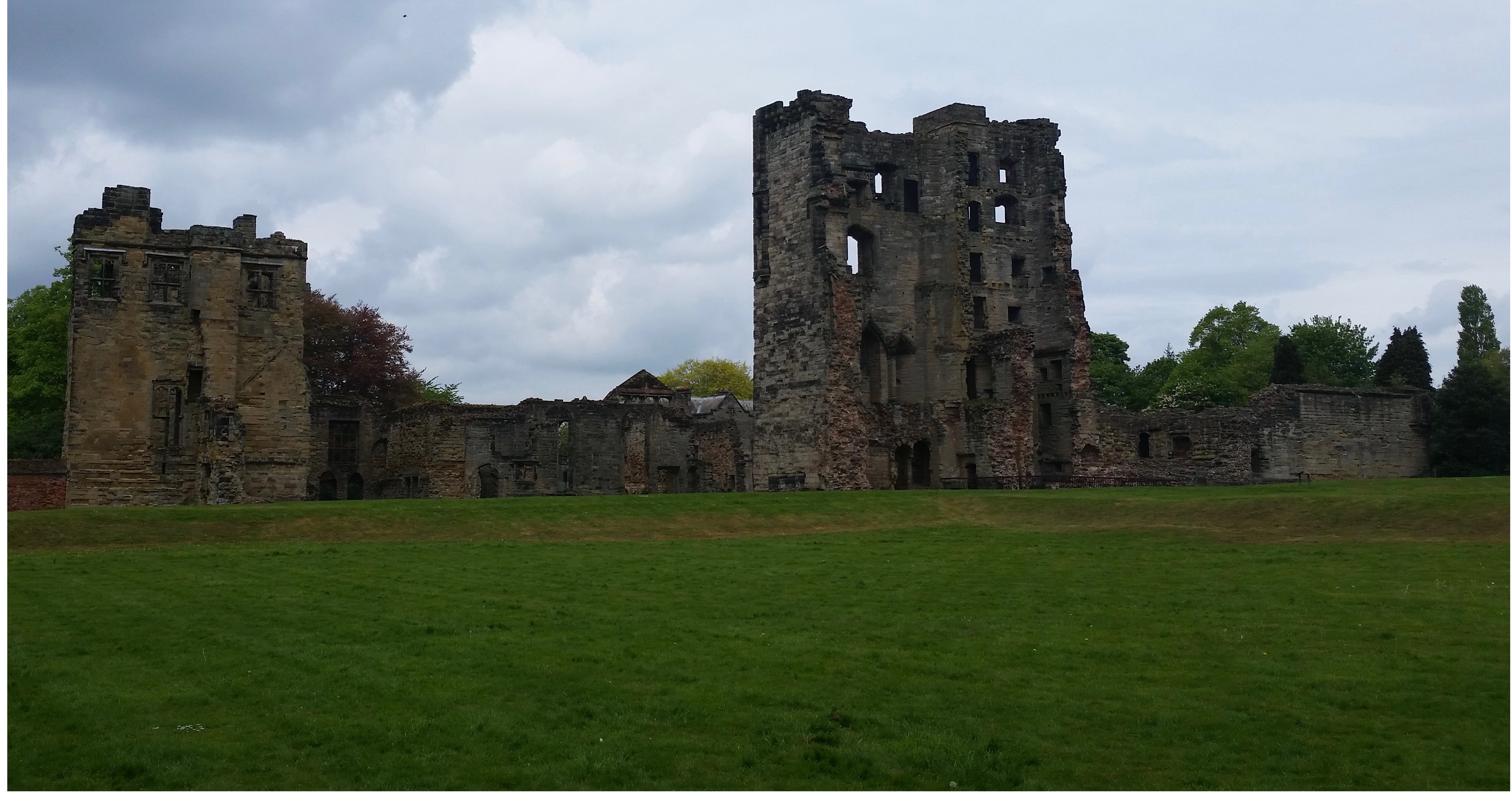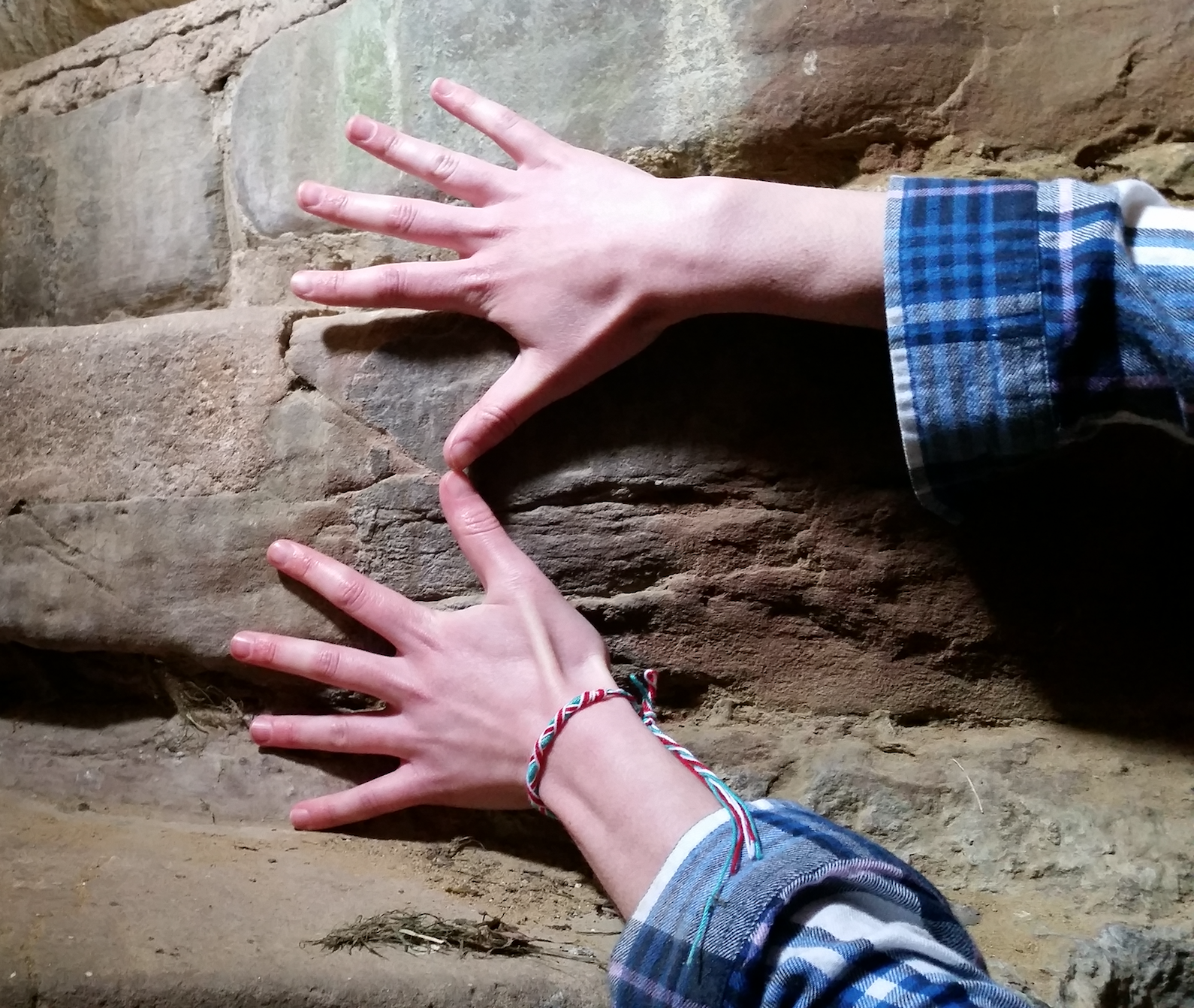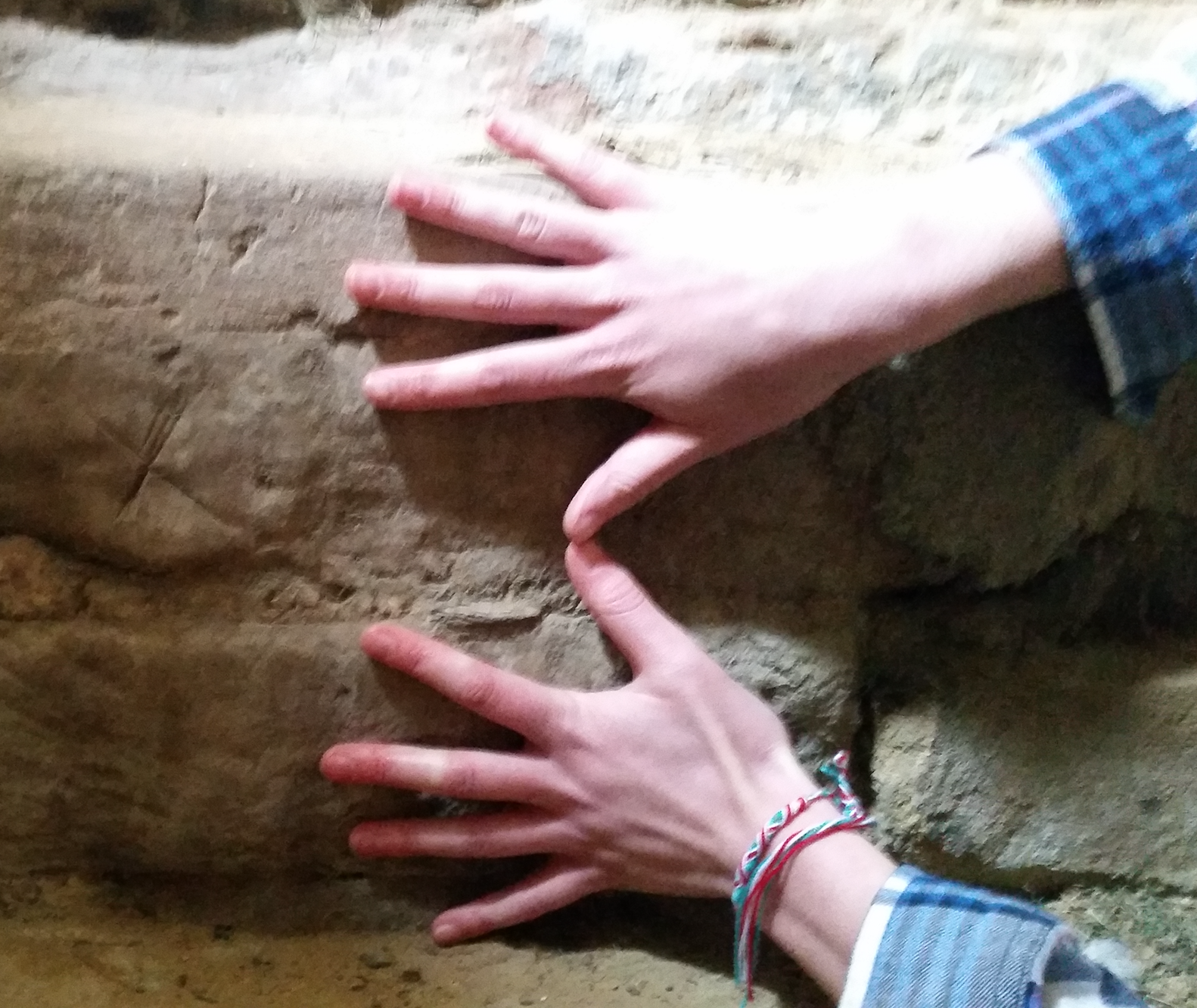Strategical Architecture
From Londonhua WIKI
Revision as of 22:29, 22 June 2017 by Vnmercouris (talk | contribs)
Strategical Architecture
 Your Project Page Picture Caption |
Contents
Abstract
This project looks at how the architecture of castle might have been used in warfare. By looking at both Farnham Castle and Ashby de la Zouch I explored the remains of two castles that were involved in the the British civil war. I then compared what I found while visiting both of the castles and explained how each of the defences work.
Introduction
I suggest you save this section for last. Describe the essence of this project. Cover what the project is and who cares in the first two sentences. Then cover what others have done like it, how your project is different. Discuss the extent to which your strategy for completing this project was new to you, or an extension of previous HUA experiences.
Section 1: Background
Castles were designed to be medieval strongholds that usually housed the lord of the territory in which it stood. In western Europe, the castle developed rapidly starting in the 9th century beginning as just a motte and bailey structure. An enclosed courtyard usually accompanied this type of fortification; over time castles began to include different features that helped with defenses. Some of these included being located on a high mound with a ditch surrounding the stronghold, having a surrounding wall and a keep that served as a safe place to retreat to in times of a siege.
The Influence of Castles on Medieval England
In the 1000s motte and bailey castles were being built all over England and gave way for establishing Norman control through William the Conqueror. The castles provided a small garrison of men the ability to control a decent portion of land and population. By having this control they were able to drive the Saxon rebellion out of the land. After that castle became a place for a lord to run his estate and see the surrounding area that was claimed as his. Over time the small wood motte and bailey castles became large stone fortresses showing off the lord's wealth and power. Over time castles became very important in warfare as a castle usually control a land economy by acting as the treasury.
Castles in Media
As of recently castle have grown quite famous due to their role in media. Many TV shows and movies have used castles as the backdrop to there production such as the American musical comedy, Galavant, which was filmed in Farleigh Hungerford Castle, Merlin, The Crown and more. The famous castle Hogwarts was created by J.K. Rowling for the series Harry Potter and has become widely known. Many people also visit restored castles or ruins and take videos, which are posted on the web. Before these portrals though the most famous comes from the many different versions of the Arthurian Legends that have been around since the early 12th century.
Ashby de la Zouch Castle
The castle of Ashby de la Zouch was a manor house that was modified by Lord William Hastings in the 15th century. Lord Hastings also build a new chapel and two towers that still stand in the ruins. The ruins also contain the remains of a kitchen and a great tower. While Lord Hastings was the one to start work on Ashby de la Zouch Castle he was executed in 1483 interrupting work on the castle, however, Ashby became a prominent site for his descendants. During the time of the Civil War, Ashby became an important royalist base under the command of Henry Hastings. The castle served as a steady fortification during the war till it surrendered in 1646 with its fortifications being demolished two years later. It wasn't until the 19th century that Ashby became popular as a tourist location, due to Sir Walter Scott's novel Ivanhoe (1819).
Farnham Castle
Farnham Castle, almost 900 years old, was a place for powerful and wealthy medieval Bishops of WInchester. For hundreds of years it served as an adminsitrative center, fortress and accomedations, as well ass providing a convientient stoping place in between London and Winchester. For over 800 year bishops renovated and rebuilt the castle buildings which insured the castles survival as well as covered up and distroyed evidence of earlier building work. During the British Civil War Farnhams postition on the western edge of the area held by Parliamnet made the castle stratigically important. In 1642 Captain George Wither became a commander of a Parliamentarian garrison at Farnham Castle. On November 10 he evacuated the castle after reports of a Royalist advance accross the Thames into Surey. A few days later the keep was occupied under a Royalist. Parliament then sent a regiment under the comand of Colonel Sir William Walle to the keep. On November 26 after a three dhour assault the attackers blew up the central gate and attacked the keep causing the Royalist solders to surrender. It was then on December 29 that Waller ordered the north-eastern wall of the keep blown up. Once the war had ended Parliament in 1648 ordered that Farnham Castle be made indfensable. In 1958 archaelogist discovered the remains of a smaller square tower buried withing the larger round keep. This earlier keep was a variant form of a motte and bailey castle. Sometime in the middle of the 12th century, the tower was knocked down, probably order by Henry II, leaving the foundation and the well which remained until a Tudor Bishop had both filled in. The castle npw is used as a training, conference, and event venue. In 2011, a permanent exhibition '900 Year of Living History' opened in the stable block and is still open to the public today
Section 2: Deliverable
Ashby de la Zouch Castle
This Castle started out as a manor so while being built there was never a need to make sure that the castle had much defensive architecture. Ashby de la Zouch was designed to be a place of luxory so it was filled with a large kitchen, bedrooms, a hall for entertaining. There also was a chapel on site for the household who would have been served by priests and singers. It wasn't until the time of the civil war that the Ashby was used a base for the RoyalistsBoth the town and castle were fortified by Henery, the fifth Earl of Huntingdon. In the town, several buildings were torn down and used to create defenses, with the castle as the focus of these arrangements being dubbed 'Hastings' Stronghold'. When the Royalist eventually surrended Ashby they were allowed to leave safely but the castle was unfortunly bombed.
Uneven Steps
One thing that I noticed was this particular step of uneven stairs, while I was on the look out for defensive architecture I actually found these because I trip over them, which was the purpose behind them. The idea was that the people living there and climbing the stairs everyday would get used to the steps but those who would try and storm the tower would trip unfamiliar with the layout. As you can see in the picture one step is about a hand and a quater high while the other is almost two hands high. While this many seem like not much to the eye people climping the stairs in a hurry would be used to all steps being a certain level and this would cause them to at least stumble.
Winding Steps
Since the castle was blown up there is not much remaining in the way of stair cases but on the one tower remaining there is a tall winding stair case. When the tower was being attacked these stair cases would provide a benefit to those at the top due to the direction the stair traveled. If coming from the top a person would be traveling counter clockwise. As most people are right handed this gave them more room to swing their sword then the enemy who would be travel clockwise as the made there way upwards.
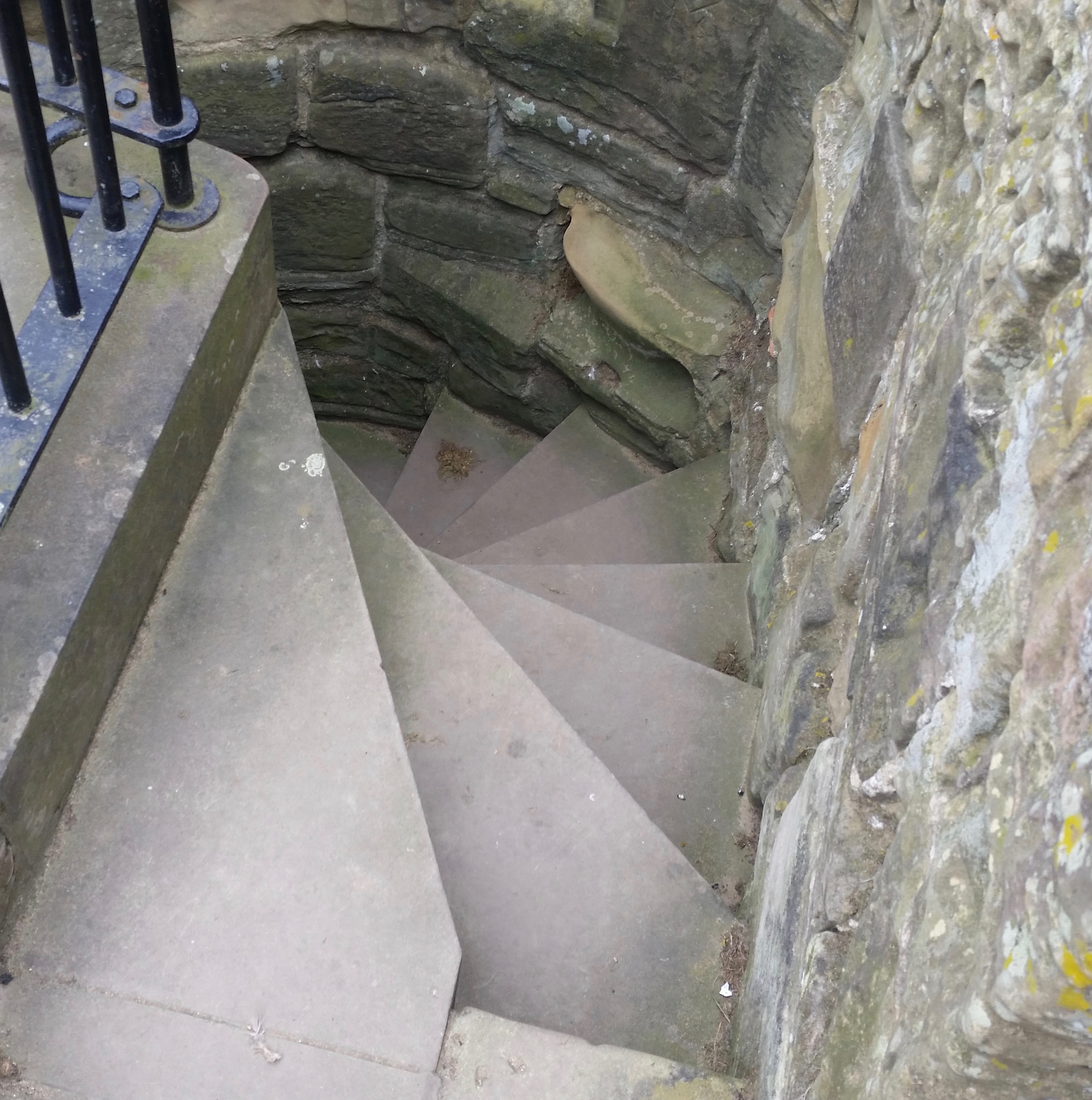
Supply Tunnels
It was only during the civil war that the castle had supply tunnels built. These ran under the castles wall and were used to move troops and supplies. There also was a large storge area at the end of the tunnel that was used to store supplies.

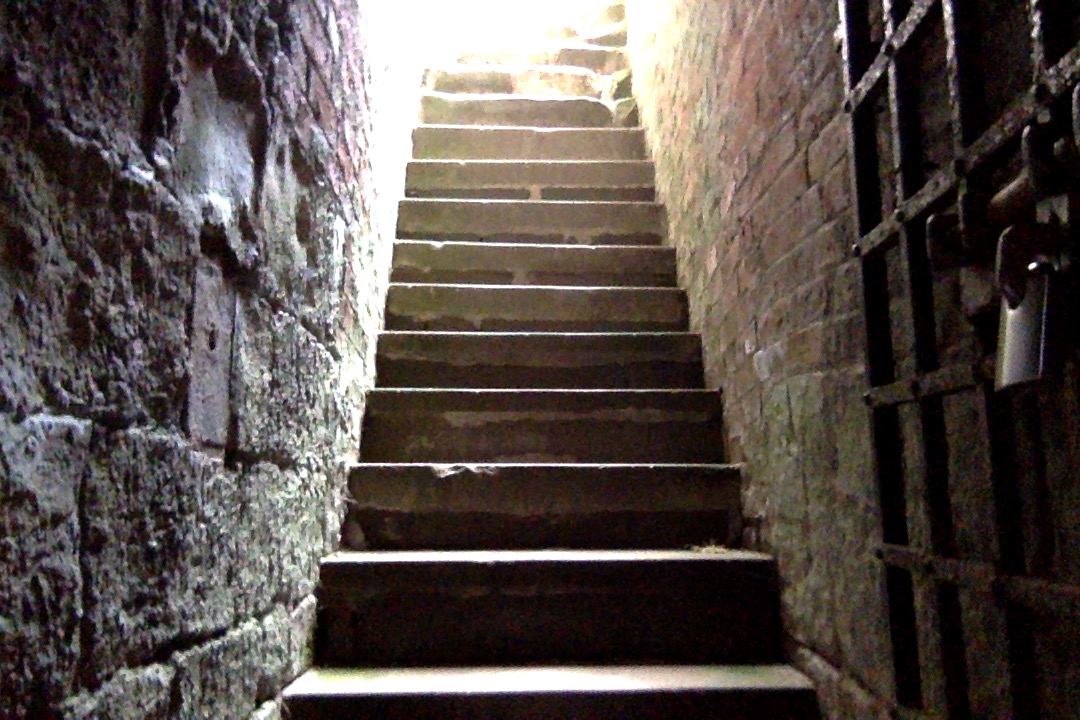
Farnham Castle
Archer WIndow
These windows were created to be used for archers. There skinny long shape was to allow for an archer to be able to shot at the incoming enemy from above while providing as much protection as possible.

Drawbridge
Before entering the keep an enemy would first have to cross a deep pit. This would be done by going over the drawbridge when down. What is good with this set up is that there was a room right about the bridge that housed all the mechanics for it so if an enemy attempted to cross over it would be easy to raise it. Unfortunately when the castle was made indefensible the bridge was destroyed and the pit filled in. Below is an artist rendition of what it might have looked like and then what it looks like today.
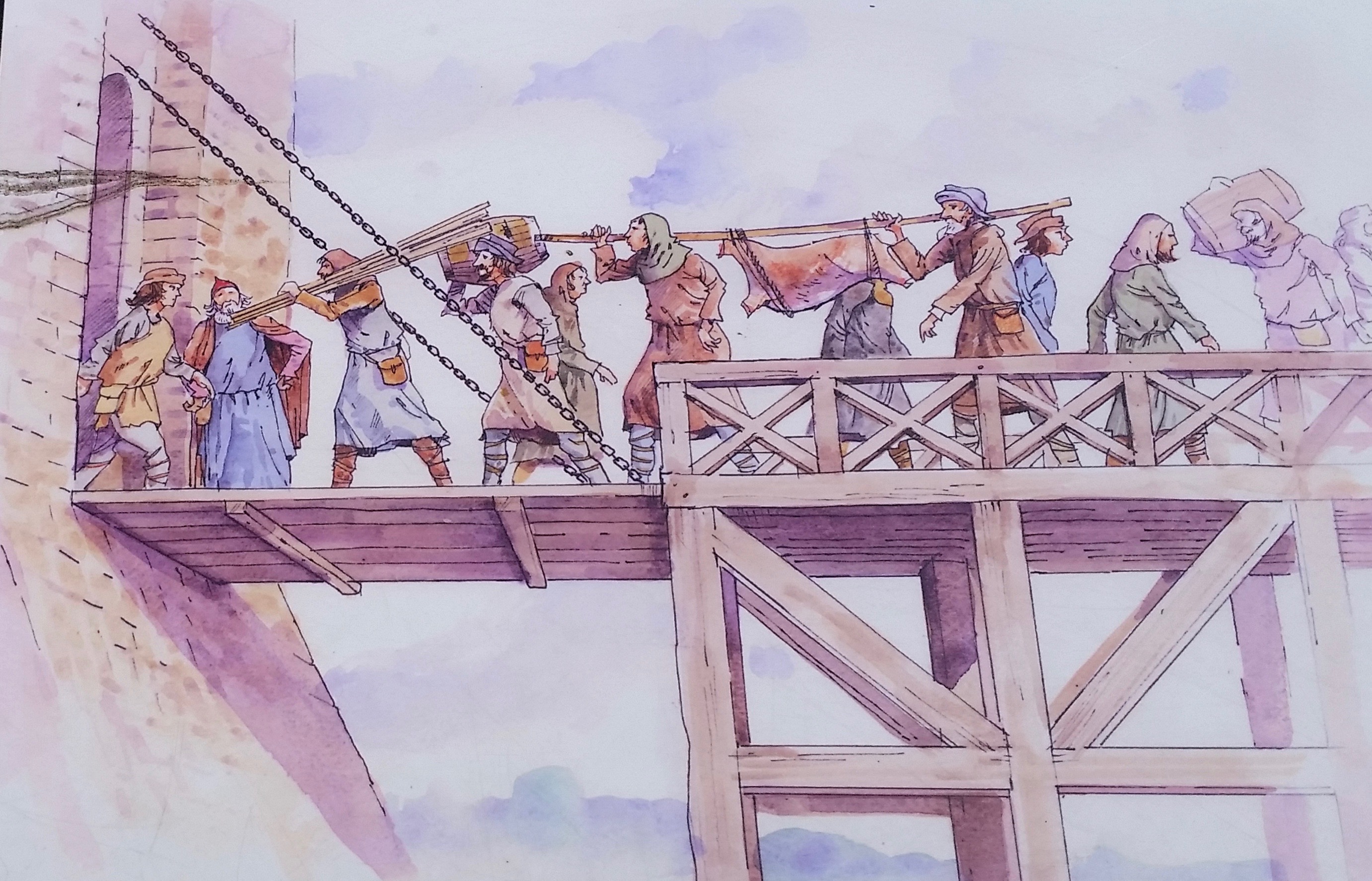
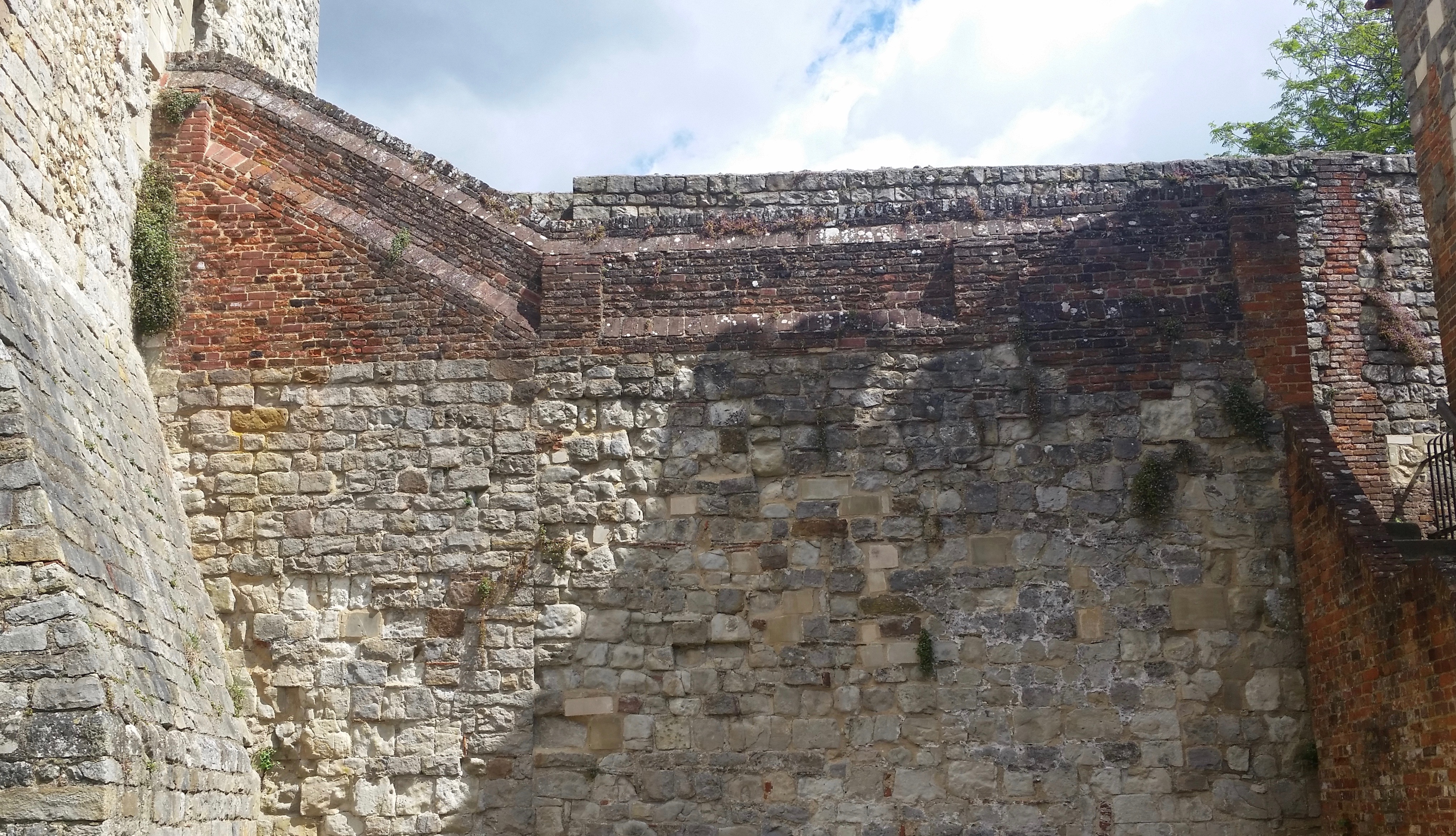
Murder-Hole
Assuming that a group of enemies managed to make it over the bridge the next line of defense would be the murder hole. Before they could enter the keep a gate would drop and the drawbridge would close locking the invaders in a small room with a hole over it. Then while trapped inside burning hole oil would be poured down the hole leading to a gruesome and painful death.

Comparison
Each of the castles have their own unique set of architecture and in my opinion, I feel that they are so different from each other because of the way the buildings were originally designed. With Ashby de la Zouch there really wasn't much thought of warfare when designing the building, most of the money and resources were for style or luxury. This lead to very few and non-effective defenses such as with the stairs. The other thing to note is that the tunnel also was something that was built once the civil war had started so when looking at the original building it would not have been there. Farnham Castle, on the other hand, was built to be defended. This allowed for the drawbridge and murder-hole to be purposefully put into the design. It is unfortunate that both of these castles were so radically altered after the civil war we will never have true images of the buildings' original forms.
Conclusion
This project forcused on looking for strategical or defensive architecture in castles that would have help protect it against enemies. I found that the type of defensive varied based on the original purposed of the building. One way to expand upon this project is to visit some more of the many other castles in the United Kingdom and look at how there defenses compare with what I have already found.
References
Hidden complexities of the frankish castle (2012). . Amsterdam: Leiden University Press. Retrieved from http://ebookcentral.proquest.com.ezproxy.wpi.edu/lib/wpi/detail.action?docID=3327210
Hooker, D. (2004). The importance of medieval castles. Prep School, , 12.
The idea of the castle. (2004). In A. Wheatley (Ed.), The idea of the castle in medieval england (NED - New edition ed., pp. 19-43) Boydell and Brewer.
Seats of power in europe during the hundred years war (2015). . Havertown: Oxbow Books. Retrieved from http://ebookcentral.proquest.com.ezproxy.wpi.edu/lib/wpi/detail.action?docID=4542922
